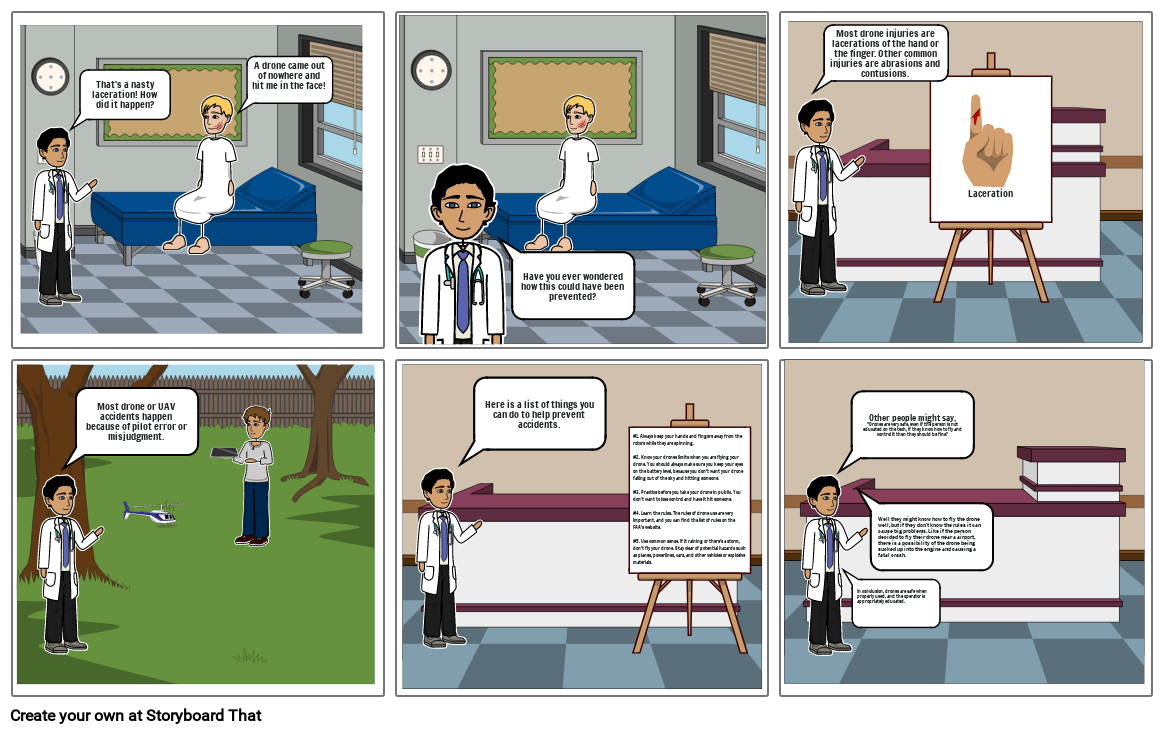Drone Injuries

Storyboard Text
- That's a nasty laceration! How did it happen?
- A drone came out of nowhere and hit me in the face!
- Have you ever wondered how this could have been prevented?
- Most drone injuries are lacerations of the hand or the finger. Other common injuries are abrasions and contusions.
- Laceration
- Most drone or UAV accidents happen because of pilot error or misjudgment.
- Here is a list of things you can do to help prevent accidents.
- #1. Always keep your hands and fingers away from the rotors while they are spinning.#2. Know your drones limits when you are flying your drone. You should always make sure you keep your eyes on the battery level, because you don't want your drone falling out of the sky and hitting someone.#3. Practice before you take your drone in public. You don't want to lose control and have it hit someone. #4. Learn the rules. The rules of drone use are very important, and you can find the list of rules on the FAA's website.#5. Use common sense. If it raining or there's a storm, don't fly your drone. Stay clear of potential hazards such as planes, powerlines, cars, and other vehicles or explosive materials.
- Other people might say,Drones are very safe, even if the person is not educated on the tech, if they know how to fly and control it then they should be fine.
- In conclusion, drones are safe when properly used, and the operator is appropriately educated.
- Well they might know how to fly the drone well, but if they don't know the rules it can cause big problems. Like if the person decided to fly their drone near a airport, there is a possibility of the drone being sucked up into the engine and causing a fatal crash.
Over 30 Million Storyboards Created
No Downloads, No Credit Card, and No Login Needed to Try!
